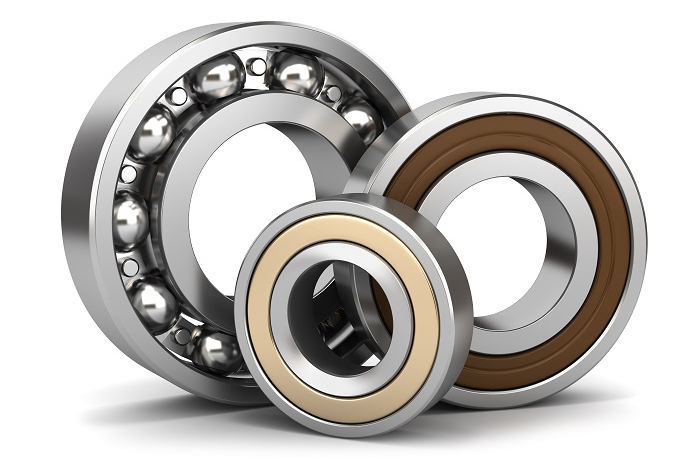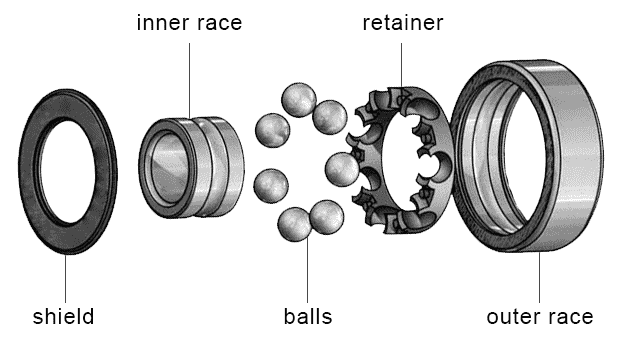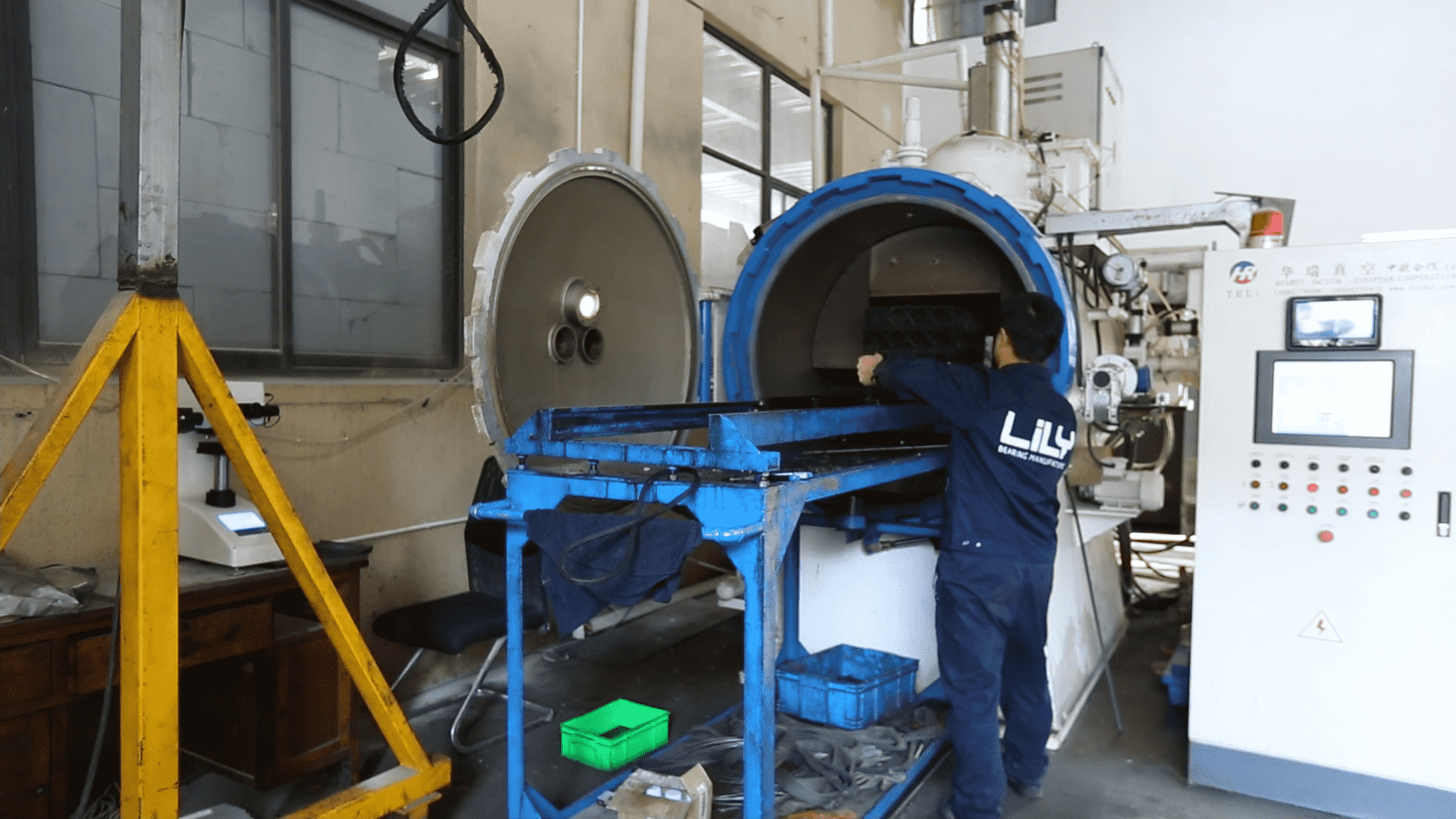How Are Ball Bearings Made?
Ball bearings are unsung heroes of the industrial world, playing an indispensable role in the smooth operation of machinery across a multitude of industries. But how are ball bearings made? What are ball bearings made of? Let's delve into the manufacturing process of ball bearings, their quality control measures, and their widespread applications.

Ball Bearings
What are Ball Bearings?
Ball bearings are mechanical components designed to reduce rotational friction while supporting radial and axial loads. Their primary purpose is to ensure the smooth operation of rotating parts in machinery. The typical components of a ball bearing include:
- Inner ring/race: The inner part of the bearing that fits around the rotating shaft. The inside surface of the inner ring, known as the raceway, is designed to match the profile of the balls, allowing them to roll smoothly and efficiently.
- Outer ring/race: The outer part of the bearing that holds the balls in place. It is typically mounted inside a housing or bore and remains stationary.
- Balls: Spherical rolling elements that enable smooth rotation and carry the load between the inner and outer rings. They are made of extremely hard and durable materials like chrome steel, ceramic, or stainless steel.
- Cage or Retainer: A component that separates and maintains spacing between the balls. It ensures the balls don’t come into contact with each other during operation, reducing friction and wear. Cages can be made from various materials including metal and high-strength polymers.
- Shields or Seals: These are protective covers that are typically installed on the outer ring and provide a barrier to prevent contaminants from entering the bearing, increasing its lifespan.

Components of a Bearing
The Manufacturing Process of Ball Bearings
The manufacturing process of ball bearings involves several key stages.
- Material Selection: High-quality steel, such as high carbon chromium steel, is the most common material used for making ball bearings due to its high strength and resistance to wear. Other materials such as stainless steel, ceramics, and even some plastics might be used depending on the bearing's application requirements.
- Forging or Casting: The chosen material is either forged or cast into the shape of the bearing components. Forging involves heating and shaping the steel, aligning its grain structure to enhance durability. Alternatively, casting, less common but used for larger or complex parts, involves molding molten metal into the desired shape.
- Heat Treatment: The forged or cast parts undergo heat treatment to enhance their hardness and durability. The parts are heated to a high temperature, then cooled rapidly in a process known as quenching, followed by tempering, where the parts are re-heated to a lower temperature and then cooled slowly. This process creates a balance between hardness for wear resistance and toughness to resist impact loads.

Heat Treatment
- Machining, Grinding & Super Fine Grinding: The heat-treated parts are then machined and ground to their final dimensions with high precision. Machining processes can include turning, milling, and drilling, all performed using computer-controlled machines for accuracy. Super Fine Grinding is performed to achieve the right sphericity and surface finish, ensuring smooth and efficient operation.

Grinding
- Assembly and Lubrication: Finally, the inner and outer rings, balls, and cage are assembled into a bearing, and lubricant is applied to reduce friction and wear between the moving parts, ensuring the bearing operates smoothly and efficiently. The type of bearing lubricant, either oil or grease, depends on the application.

Assembly
After assembly, the ball bearings are cleaned, often with non-residue cleaners, and are then ready for inspection and packaging. Each manufacturing step has its intricacies, and they all demand meticulous attention to detail to ensure the production of high-quality bearings.
Quality Control and Testing
Ball bearings undergo rigorous testing and quality control procedures to ensure their reliability and durability. The common inspection and measurement techniques include:
- Visual Inspection: Examining the bearings for any visible defects, such as cracks, wear, or surface irregularities.
- Dimensional Measurement: Using special testing instrument for bearings, to measure critical dimensions like inner and outer diameters, ball size, and width.
- Roundness and Runout Measurement: Evaluating the roundness of the bearing components and measuring any runout or deviation from the ideal circular shape.
- Surface Roughness Analysis: Assessing the smoothness or roughness of bearing surfaces using instruments like profilometers to ensure proper functioning and reduce friction.
- Hardness Testing: Determining the hardness of bearing components using methods like Rockwell or Vickers hardness testing to ensure they meet required specifications.
- Noise and Vibration Analysis: Employing specialized equipment to detect and analyze noise and vibration levels during bearing operation, which can indicate potential issues or abnormalities.
- Bearing Lubrication Analysis: Evaluating the lubricant condition and properties, such as viscosity, cleanliness, and contamination level, to ensure optimal lubrication and extend bearing life.
- Non-Destructive Testing (NDT): Utilizing techniques like ultrasonic testing or magnetic particle inspection to detect internal defects or cracks without damaging the bearing.
- Endurance and Performance Testing: Subjecting the bearings to simulated operating conditions, such as bearing loads, speed, and temperature, to evaluate their durability, fatigue resistance, and overall performance.
Applications and Industries That Rely on Ball Bearings
Ball bearings find extensive applications in various industries, including:
- Automotive Industry: In vehicles, ball bearings are used in parts such as engines, transmissions, and wheel hubs.
- Aerospace Industry: In aerospace, they are utilized in components like aircraft engines and landing gear.
- Industrial Machinery: Ball bearings are integrated into heavy-duty machinery like conveyors and electric motors.
Conclusion
From material selection to assembly, the production of ball bearings is a complex process that demands precision and attention to detail. These small components play a pivotal role in the efficient functioning of machinery across various industries. The continual advancements in bearing technology promise enhanced performance, durability, and efficiency in the future.
Keep Learning








